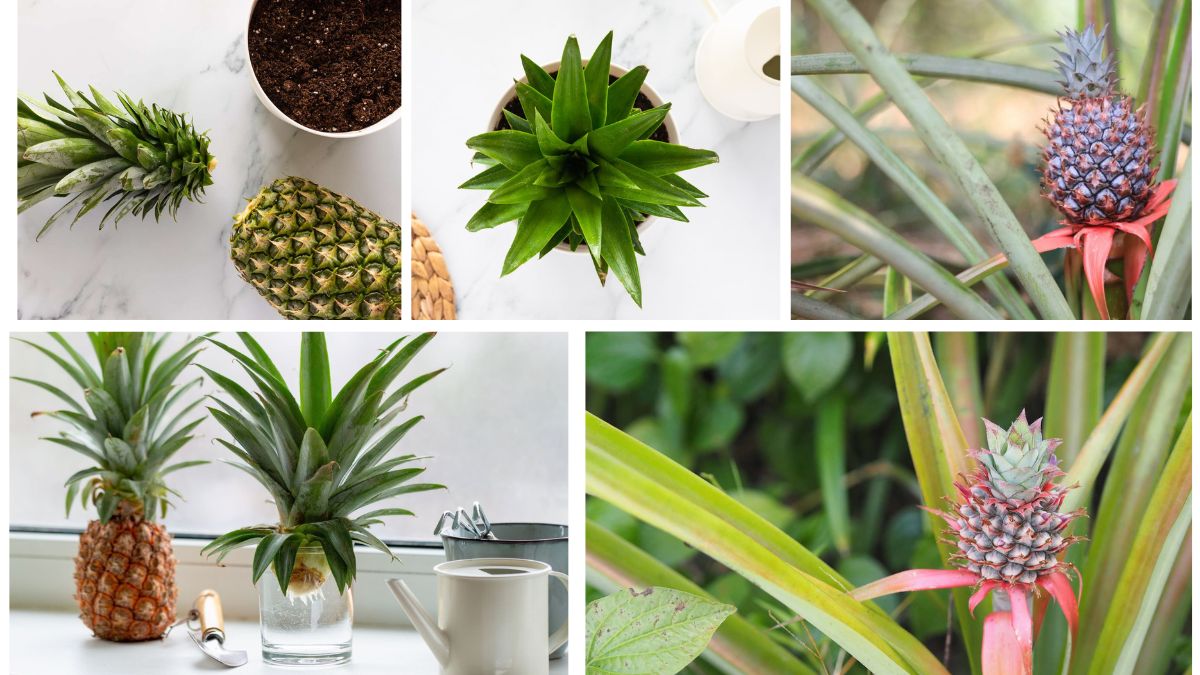Pineapples (Ananas comosus) are tropical fruits celebrated for their sweet, tangy flavor, nutritional value, and ornamental appeal. Growing a pineapple at home is both a rewarding and educational experience, allowing gardeners to enjoy fresh, pesticide-free fruit while learning about tropical plant care. This guide provides a complete step-by-step approach for beginners and enthusiasts to plant, nurture, and harvest pineapples successfully.
Introduction
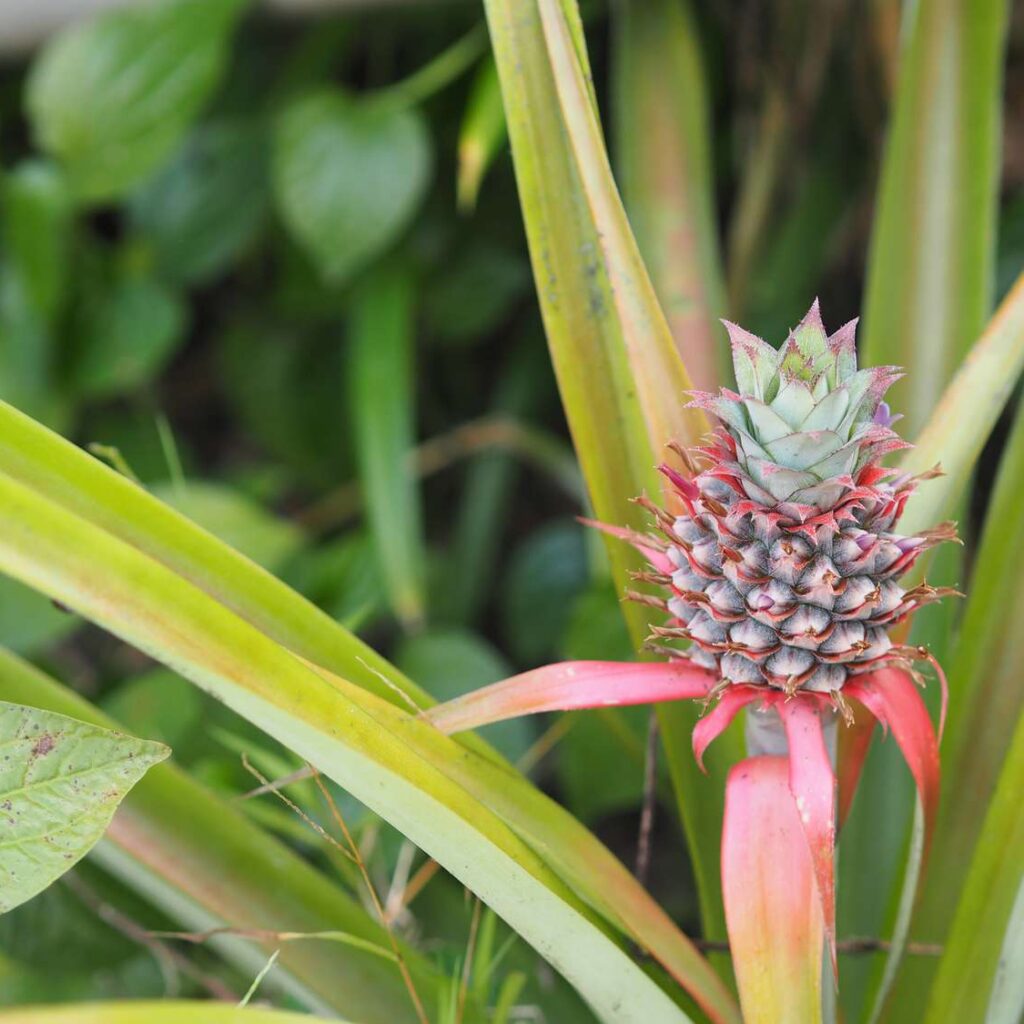
Pineapples are more than just delicious fruits; they are symbolic of hospitality and a stunning addition to home gardens. Cultivating pineapples at home gives gardeners the opportunity to observe their unique growth pattern, from a leafy crown to the flowering stage, and finally to a ripe fruit.
Unlike many fruits, pineapples can be grown from the top leafy crown of a store-bought fruit, making it a sustainable and fun project. While pineapples are slow-growing, with patience and proper care, they reward gardeners with a tropical fruit harvest that is fresh, flavorful, and uniquely satisfying.
1. Selecting the Right Pineapple
The first step in a successful home-grown pineapple is choosing a healthy fruit and crown.
Guidelines:
- Select a pineapple with healthy, green leaves free from browning or wilting.
- The fruit should be ripe but firm, avoiding overripe or damaged ones.
- Avoid crowns that are loose or already starting to rot.
Benefits:
A healthy crown increases the chance of successful rooting and ensures vigorous growth.
2. Preparing the Pineapple Crown
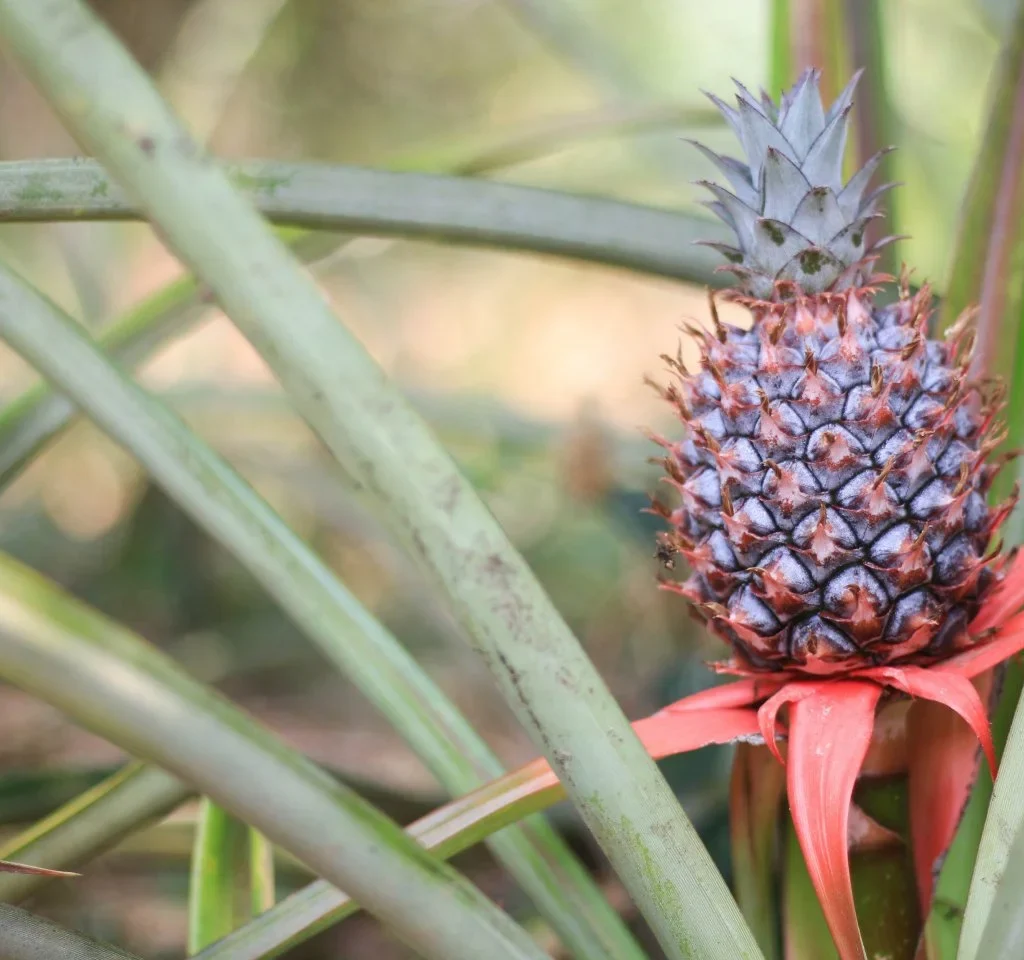
Proper preparation of the pineapple crown is essential for successful planting.
Steps:
- Twist or cut off the leafy top from the fruit carefully.
- Remove any excess fruit flesh to prevent rotting.
- Peel away a few layers of the lower leaves to expose the base.
- Allow the crown to dry for 1–2 days to form a callus at the cut site.
Tips:
- Drying the crown reduces the risk of fungal infections and root rot.
- Avoid leaving fruit flesh on the crown, as it can cause decay before roots develop.
3. Rooting the Crown
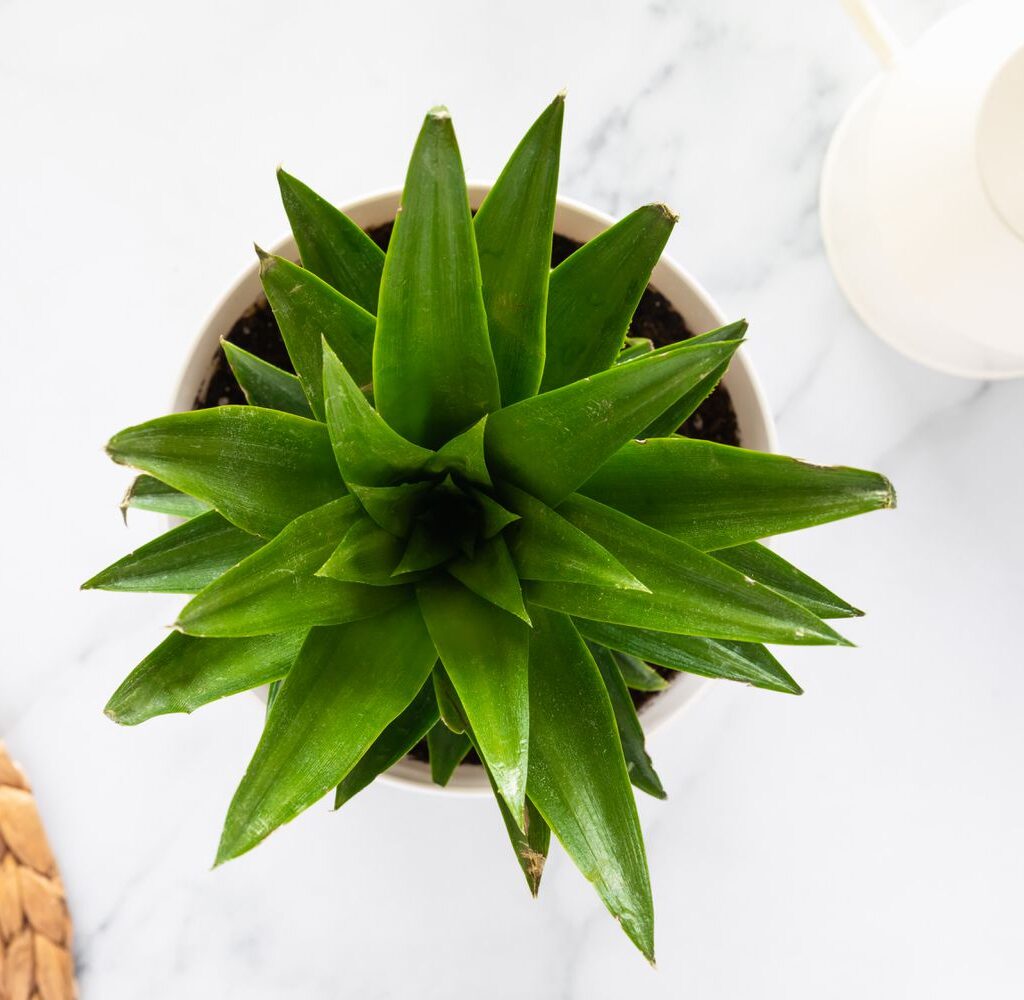
Before planting, the pineapple crown needs to develop roots.
Methods:
- Water method: Place the base in a small container of water, ensuring leaves do not touch water, and change water every 2–3 days. Roots typically appear in 2–4 weeks.
- Soil method: Plant the crown directly in a well-draining potting mix, keeping the soil lightly moist. Roots will emerge in 3–5 weeks.
Tips:
- Use a sunny, warm spot to encourage root development.
- Avoid overwatering, which can cause root rot.
4. Choosing the Right Soil and Pot
Pineapples thrive in well-draining, slightly acidic soil.
Guidelines:
- Use a mix of sandy soil, perlite, and organic compost for drainage and nutrients.
- Choose a pot 6–8 inches in diameter with drainage holes to prevent waterlogging.
- Pineapples can also be planted directly in the garden in tropical or subtropical climates.
Benefits:
Well-draining soil prevents root rot, supports growth, and provides the nutrients needed for a healthy plant and fruit development.
5. Planting the Pineapple

Once roots are established, planting ensures stable growth.
Steps:
- Fill the pot with soil, leaving space for the crown.
- Plant the crown so that the base is just above soil level, firming the soil gently around it.
- Water lightly to settle the soil, avoiding saturated conditions.
Tips:
- Ensure the crown is upright to promote straight leaf growth.
- Mulching around the base can retain moisture and control weeds.
6. Watering and Fertilization
Proper watering and feeding are critical for healthy growth and fruiting.
Watering Guidelines:
- Water the plant when the top 1–2 inches of soil feel dry.
- Avoid overwatering, especially during cooler months.
- Pineapples are drought-tolerant but grow best with consistent moisture.
Fertilization:
- Use a balanced liquid fertilizer every 6–8 weeks during the growing season.
- Slow-release fertilizers high in nitrogen and potassium support leaf growth and fruit development.
Benefits:
Balanced water and nutrients result in vibrant leaves and healthy, sweet fruit.
7. Lighting Requirements
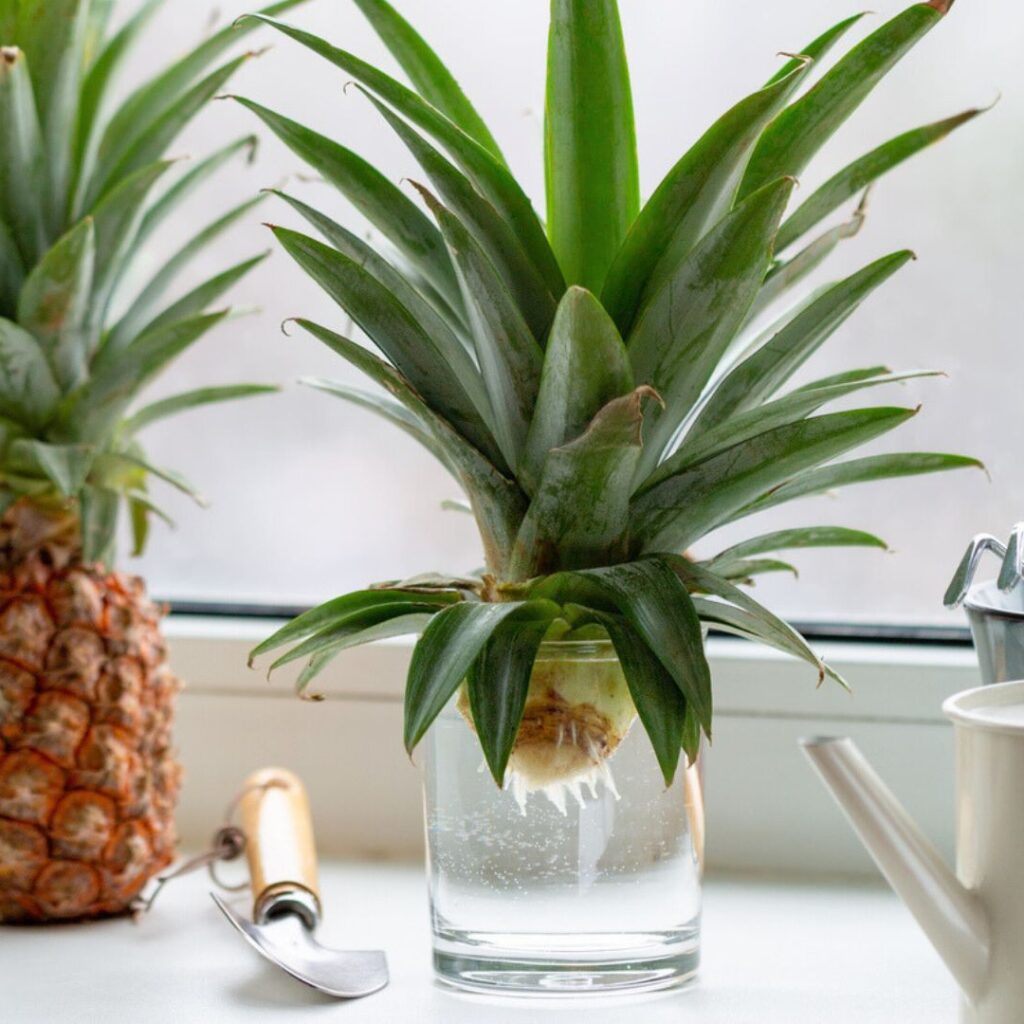
Pineapples thrive in bright, indirect sunlight, with at least 6 hours of sunlight per day.
Guidelines:
- Indoor plants should be placed near a south-facing window.
- Outdoor plants benefit from full sun, which enhances fruit sweetness.
- In low-light conditions, growth may slow, and fruiting may be delayed.
Tips:
Rotate the plant to ensure even light exposure and prevent leaning.
8. Temperature and Climate Considerations
Pineapples are tropical plants that prefer warm, stable conditions.
Guidelines:
- Ideal temperatures: 65–95°F (18–35°C).
- Protect from frost or cold drafts below 60°F (15°C).
- Indoor growing in temperate zones ensures consistent warmth and sunlight.
Benefits:
Maintaining optimal temperature and climate ensures continuous growth, flowering, and fruit development.
9. Flowering and Fruit Development
Pineapples take time to produce fruit, often 18–24 months from planting.
Flowering:
- Pineapples produce a central flower stalk before fruit formation.
- Each flower cluster produces a segment of the fruit, eventually merging into a single pineapple.
Tips:
- Flowering can be encouraged by slightly stressing the plant with cooler nighttime temperatures or ethylene gas exposure.
- Protect developing fruit from excess moisture or pests.
Benefits:
Proper care during flowering ensures larger, sweeter fruits and a visually impressive plant.
10. Harvesting Pineapple
Harvesting at the right time ensures maximum sweetness and flavor.
Guidelines:
- Pineapples are ready when the fruit turns golden-yellow and emits a sweet aroma.
- Gently twist or cut the fruit from the stalk.
- Avoid harvesting too early, as it will result in sour or less sweet fruit.
Tips:
- Wash the fruit before eating or storing.
- Enjoy fresh pineapple or use it in juices, desserts, and savory dishes.
Benefits:
Home-grown pineapples are fresh, flavorful, and free from pesticides, providing a satisfying reward for your gardening efforts.
11. Common Issues and Solutions
Growing pineapples may face challenges if care is inconsistent.
Problems:
- Yellowing leaves: Often due to nutrient deficiency or overwatering.
- Slow growth: Caused by low light, poor soil, or low temperatures.
- Pests: Mealybugs, scale insects, and fungal infections.
Solutions:
- Adjust watering and fertilization practices.
- Provide sufficient sunlight and warmth.
- Use natural pesticides or neem oil for pest control.
Benefits:
Timely problem-solving ensures healthy growth and high-quality fruit.
Conclusion
Planting a pineapple at home is a rewarding and educational experience, offering both ornamental and culinary benefits. By selecting a healthy crown, preparing it properly, providing optimal light, water, soil, and nutrients, and monitoring for problems, gardeners can enjoy a unique, sweet, and delicious harvest.
Patience is key, as pineapple growth is slow but steady, culminating in a stunning tropical plant and fruit that brings joy and a sense of accomplishment. Home-grown pineapples not only provide fresh produce but also enhance indoor and outdoor garden aesthetics, making them a valuable addition to any garden.
With this complete beginner’s guide, anyone can confidently embark on the journey of growing pineapples at home, reaping the satisfaction of cultivating their own tropical fruits while mastering essential gardening skills.
